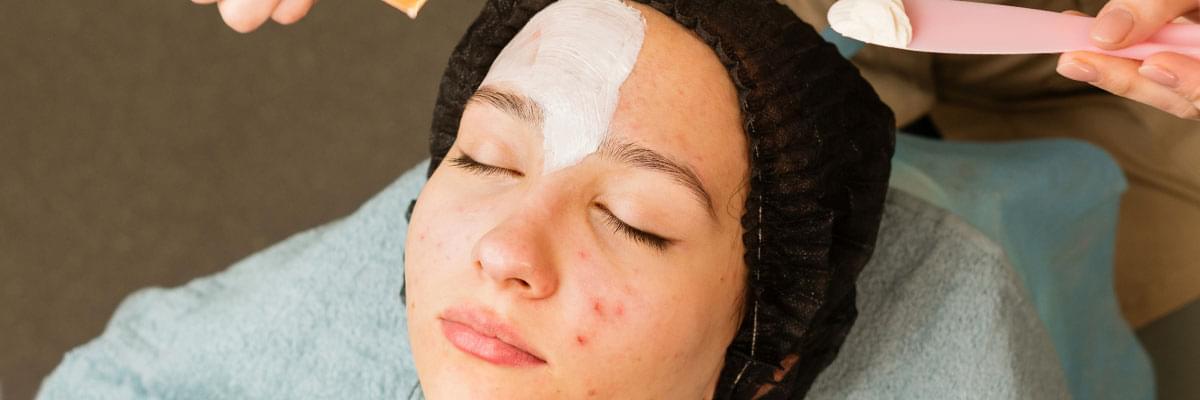
What can we do for you?
Acne scars are a common issue for many individuals, often a lingering reminder of acne outbreaks. Fortunately, advances in dermatological treatments have made it possible to significantly reduce and potentially eliminate these blemishes. This blog post explores the most effective professional treatments for acne scars, helping you to choose the right option for your skin type and scar severity.1. Understanding Acne Scars
Acne scars typically form as a result of inflamed blemishes caused by skin pores engorged with excess oil, dead skin cells, and bacteria. The pore swells, causing a break in the follicle wall. Deep breaks lead to more serious lesions, which when healed, can leave significant scars.
Types of Acne Scars:
Atrophic scars: These are depressions in the skin caused by a lack of collagen; they include boxcar, ice pick, and rolling scars.
Hypertrophic scars: These are raised scars that result from an overproduction of collagen.
2. Chemical Peels
What they are: A chemical solution applied to the skin that causes it to exfoliate and eventually peel off, making way for new, smoother skin.
Best for: Mild to moderate acne scars, particularly superficial scars and some deeper scars.
Procedure: A dermatologist applies a chemical solution, such as salicylic acid, glycolic acid, or trichloroacetic acid, which removes the outer layer of the skin to a certain depth, depending on the severity of the scars.
Recovery: Complete healing can take 1-2 weeks, depending on the depth of the peel, with redness and peeling occurring throughout the process.
3. Laser Resurfacing
What it is: A method that uses concentrated light beams to reduce acne scars by removing the outer layer of the skin and heating the underlying skin, which promotes collagen formation.
Best for: Atrophic scars and some deeper acne scars.
Types:
Ablative laser resurfacing (e.g., CO2 laser, Erbium laser) removes layers of your skin.
Non-ablative laser resurfacing (e.g., Fraxel) stimulates collagen production without removing skin.
Procedure: Performed by a dermatologist, the laser treatment varies from 30 minutes to 2 hours, and local anesthesia is typically used.
Recovery: Can range from a few days to several weeks, with side effects including redness, swelling, and sensitivity to sunlight.
4. Microneedling
What it is: A procedure that uses small needles to prick the skin, generating new collagen and skin tissue for smoother, firmer, more toned skin.
Best for: Rolling and atrophic scars.
Procedure: A device with tiny needles is rolled over the affected area, creating micro-injuries that stimulate the body’s natural healing process.
Recovery: Minimal downtime, with redness and irritation lasting a few days. Regular sessions are necessary for optimal results.
5. Dermal Fillers
What they are: Injections that fill in acne scars, especially atrophic scars, by elevating the depressed areas to the level of normal skin.
Best for: Deep atrophic scars that do not respond well to laser treatments.
Procedure: Fillers made from hyaluronic acid, polymethylmethacrylate (PMMA), or poly-L-lactic acid are injected into the scars.
Recovery: Immediate return to normal activities, with possible minor swelling and bruising for up to a week.
6. Subcision
What it is: A surgical procedure used to treat severe, fibrotic acne scars.
Best for: Deep rolling scars.
Procedure: A needle is inserted underneath the scar tissue to break up the fibrotic strands, which are tethering the scar to the underlying tissue.
Recovery: Bruising and swelling are common for the first few days. It may take a few weeks to fully appreciate the results.
Conclusion
Choosing the right treatment for acne scars depends on the type of scar and the desired outcome. It is important to consult with a dermatologist who can assess your skin condition and recommend the most effective treatment options. With the right approach, you can significantly diminish the appearance of acne scars and achieve smoother, clearer skin that enhances your overall confidence and complexion.
Remember, the journey to reducing acne scars is a marathon, not a sprint, and requires patience and consistency with treatment plans.
Back to Articles






















